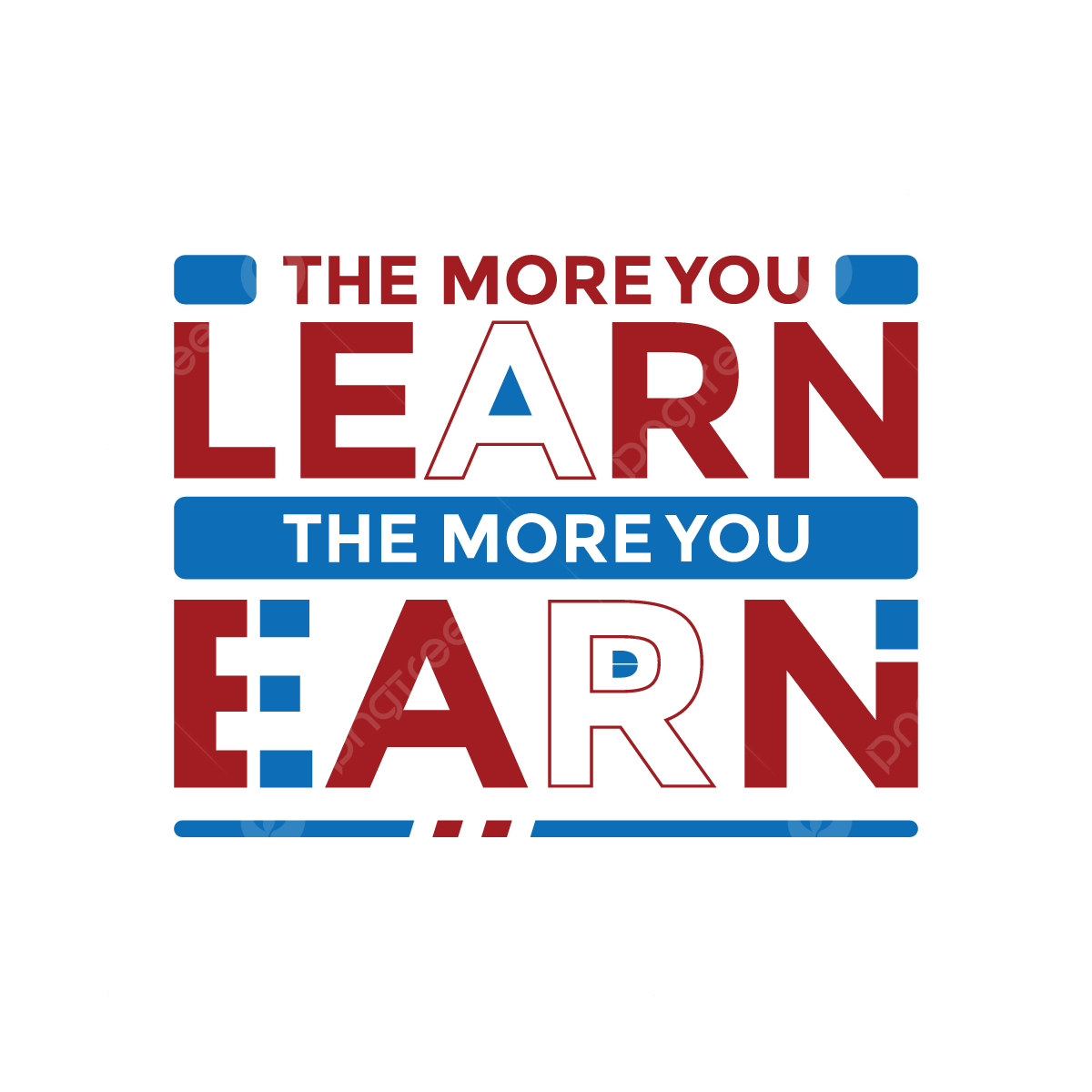Unlocking the secrets to rapid language acquisition is now within reach. This guide provides a structured approach to learning the fundamentals of a new language efficiently, covering key strategies, practical applications, and essential resources. The journey to fluency starts here, with a focus on effective methods and realistic expectations.
From understanding the crucial factors that accelerate language learning to mastering proven techniques, this comprehensive resource equips you with the tools and insights necessary for success. We’ll explore effective strategies, practical exercises, and invaluable resources to make your language learning journey smoother and more rewarding.
Introduction to Rapid Language Acquisition

Learning a new language quickly involves more than just memorizing vocabulary. It encompasses a strategic approach to immersion, focused study, and consistent practice. This process is characterized by a proactive and efficient method of grasping the core grammatical structures, common phrases, and essential vocabulary needed for basic communication. Effective language learning requires a conscious effort to prioritize and expedite the acquisition process.
Defining “Learning the Basics Quickly”
“Learning the basics quickly” in language acquisition refers to the efficient and effective assimilation of fundamental language components, including basic vocabulary, essential grammar, and practical conversational skills, within a defined timeframe. This approach prioritizes immediate communication capabilities over exhaustive linguistic mastery.
Key Factors Contributing to Fast Language Learning
Understanding the factors that facilitate rapid language acquisition is crucial for optimizing the learning process. Five key contributors are motivation, focused practice, effective learning strategies, immersion, and consistency.
- Motivation: A strong desire to learn and communicate in the target language is paramount. Intrinsic motivation, such as personal interest in the culture or a specific need to use the language, often leads to greater engagement and sustained effort. Extrinsic motivation, like career advancement or travel opportunities, can also be powerful catalysts.
- Focused Practice: Targeted practice of essential phrases, grammatical structures, and vocabulary through repetition and application in realistic contexts accelerates learning. This includes active participation in conversations, role-playing, and engaging with authentic materials.
- Effective Learning Strategies: Employing diverse and personalized strategies, such as flashcards, language exchange partners, language learning apps, and multimedia resources, can cater to individual learning styles and preferences, thereby increasing comprehension and retention.
- Immersion: Immersing oneself in the target language environment, whether through travel, living with native speakers, or actively seeking out language-rich settings, facilitates natural acquisition. This provides opportunities for contextualized learning and interaction.
- Consistency: Regular and consistent practice is vital. Even short, daily sessions dedicated to language learning yield more significant results than sporadic, lengthy study periods. Maintaining a consistent routine cultivates a habit of language engagement, thereby leading to continuous progress.
Setting Realistic Goals and Expectations
Setting realistic goals and expectations is crucial for language learners. Overly ambitious targets can lead to frustration and demotivation. Beginners should prioritize achievable milestones, such as understanding simple greetings, basic vocabulary, and basic grammatical structures.
- Avoid setting overly ambitious goals. Start with small, manageable steps. Focus on mastering fundamental aspects rather than trying to grasp complex concepts immediately.
- Embrace incremental progress. Recognize that language acquisition is a gradual process. Celebrate each step forward, regardless of its size.
- Acknowledge individual differences. Learning styles and paces vary. Be patient with yourself and adapt your learning approach to suit your needs.
Common Pitfalls and How to Avoid Them
Effective language learners recognize potential pitfalls and actively work to mitigate them.
| Common Pitfalls | How to Avoid Them |
|---|---|
| Fear of making mistakes | Embrace mistakes as opportunities for learning. Focus on communicating rather than perfection. |
| Lack of consistent practice | Establish a regular routine. Schedule dedicated time for language study, and integrate language practice into daily activities. |
| Insufficient immersion | Seek opportunities to interact with native speakers or immerse yourself in the language environment, whether through travel, language exchange partners, or language learning communities. |
| Inconsistent learning materials | Develop a comprehensive learning plan, and select resources aligned with learning goals and pace. |
| Demotivation | Set achievable goals, track progress, and reward yourself for milestones. Find a learning style that motivates you and maintain a positive attitude. |
Effective Learning Strategies

Mastering a new language involves more than just memorization; it requires a strategic approach. By employing proven techniques, you can significantly accelerate your learning journey and achieve fluency more efficiently. This section explores effective strategies for rapid language acquisition, from targeted learning methods to the integration of engaging activities.Effective language learning strategies are multifaceted, encompassing a blend of active engagement, consistent practice, and creative integration of various learning materials.
These strategies aim to make the learning process more enjoyable and efficient, leading to greater retention and ultimately, fluency.
Proven Strategies for Accelerated Language Learning
A variety of proven strategies contribute to accelerated language learning. These strategies, when implemented correctly, can significantly reduce the time required to reach fluency.
- Immersion: Total immersion in the target language environment provides an unparalleled opportunity to absorb the language naturally. This can be achieved through travel, living with native speakers, or engaging in cultural activities. Immersion offers a powerful context for understanding language use in real-life scenarios. For instance, attending a local festival in a country where the language is spoken provides an opportunity to practice conversational skills in an authentic setting.
- Flashcards and Spaced Repetition Systems (SRS): Flashcards, when paired with SRS software, are a highly effective tool for vocabulary acquisition. SRS systems dynamically adjust the frequency of review based on your learning progress, ensuring that you revisit less-familiar words more frequently. This method enhances memory retention and strengthens your vocabulary.
- Language Exchange Partners: Practicing with native speakers through language exchange partners offers a valuable opportunity for conversation and feedback. This interaction allows you to refine your speaking skills, improve pronunciation, and gain a deeper understanding of cultural nuances.
Comparing Learning Methods
A comparative analysis of different language learning methods helps identify the most suitable approaches for individual learning styles.
| Method | Strengths | Weaknesses |
|---|---|---|
| Immersion | Enhanced contextual understanding, natural language acquisition, and cultural immersion. | Requires significant time and financial commitment, potential for frustration without structured support. |
| Flashcards | Efficient for vocabulary building, customizable to individual needs, and readily accessible. | May not provide a holistic understanding of grammar or sentence structure, potentially neglecting conversation practice. |
| Language Exchange | Improved speaking skills, pronunciation refinement, and deeper cultural understanding. | Requires finding a reliable partner, potentially limited to specific language skills. |
Active Recall and Spaced Repetition
Active recall, the act of retrieving information from memory without looking at the source, is crucial for long-term retention. When combined with spaced repetition, which strategically revisits learned material at increasing intervals, this method optimizes memory consolidation. This approach leads to a more profound understanding and retention of the material.
Incorporating Music and Movies
“Music and movies are excellent tools for exposing yourself to the rhythm and flow of the language.”
Listening to music and watching movies in the target language can enhance your listening comprehension skills and familiarize you with natural speech patterns. Subtitles can provide additional support for understanding the context and vocabulary. This active engagement with authentic language can greatly accelerate your language learning process.
Practical Application and Practice

Consistent practice is crucial for mastering any new language. Regular engagement with the language, even in small increments, significantly accelerates the learning process. Active participation in various activities strengthens comprehension, enhances fluency, and reinforces vocabulary retention. This section will detail effective methods for integrating language learning into daily life and highlight the invaluable role of language partners or tutors.Effective language learning transcends rote memorization; it necessitates active engagement and consistent application.
Integrating language learning into daily routines transforms it from a chore into a natural, enriching part of life. This approach fosters long-term retention and genuine fluency, as opposed to superficial knowledge.
Importance of Consistent Practice
Consistent practice, even in short bursts, significantly impacts language acquisition. The more frequently you engage with the language, the more your brain solidifies new vocabulary, grammatical structures, and pronunciation patterns. This consistent exposure allows for gradual improvement, paving the way for more advanced comprehension and communication skills. Studies have shown that learners who dedicate even 15 minutes daily to language practice demonstrate faster progress than those who study for longer periods less frequently.
Incorporating Language Learning into Daily Routines
Integrating language learning into daily routines makes it an integral part of life. This approach transforms the task from a daunting chore to a natural and enriching experience. For example, listen to language learning podcasts while commuting, watch movies or TV shows in the target language with subtitles, or engage in simple conversations with native speakers online. These seemingly minor actions accumulate over time, building a strong foundation for language proficiency.
- Listening Activities: Listening to music, podcasts, audiobooks, or watching movies and TV shows in the target language is a simple and effective way to improve listening comprehension and become familiar with natural speech patterns. This can be integrated into daily routines by listening during commutes, while working out, or during other leisure activities.
- Reading Materials: Reading books, articles, or online content in the target language exposes you to different writing styles and expands your vocabulary. Incorporating this into your routine could involve reading a short article each day, or even just skimming through news websites.
- Speaking Practice: Even brief conversations with language partners or tutors, or practicing speaking aloud while studying, can significantly enhance fluency. Setting aside specific times for speaking practice can reinforce language acquisition.
The Role of Language Partners or Tutors
A language partner or tutor provides invaluable personalized feedback and support. This personalized interaction allows learners to focus on areas needing improvement, receive correction on pronunciation, and practice conversational skills in a supportive environment. Finding a language partner can often be as simple as joining online language exchange groups or attending local language classes. This interaction fosters confidence and encourages consistent practice.
Different Types of Language Practice Activities
| Activity Type | Description | Example |
|---|---|---|
| Conversation Practice | Engaging in conversations with native speakers or language partners. | Practicing ordering food at a restaurant, discussing current events, or having casual conversations about hobbies. |
| Reading Comprehension | Understanding and interpreting written material in the target language. | Reading news articles, short stories, or blog posts and answering comprehension questions. |
| Writing Practice | Producing written content in the target language, such as journaling, writing emails, or composing short stories. | Keeping a daily journal in the target language or writing emails to language partners. |
| Listening Comprehension | Understanding spoken material in the target language. | Listening to podcasts, watching movies, or engaging in conversations with native speakers. |
| Vocabulary Building | Learning and retaining new words and phrases. | Using flashcards, creating vocabulary lists, or incorporating new words into conversations. |
Resources and Tools

Mastering a new language hinges significantly on the quality and variety of resources utilized. Effective learning leverages diverse tools and platforms to cater to different learning styles and preferences. This section explores essential language learning resources, highlighting their benefits and showcasing practical examples.
Essential Language Learning Resources
A wide array of resources, from dedicated apps to online platforms, can significantly enhance the language learning journey. Choosing the right tools can streamline the process and make learning more engaging and efficient.
- Language Learning Apps: Applications designed for language learning often incorporate interactive exercises, vocabulary building tools, and audio recordings, making learning more dynamic and accessible. Examples include Duolingo, Babbel, and Memrise. Duolingo, for instance, uses gamification to motivate learners with points and progress bars, while Babbel offers structured lessons with interactive exercises.
- Online Language Learning Platforms: These platforms offer a comprehensive suite of language learning resources, including lessons, exercises, and communities for interaction. Platforms like Rosetta Stone, HelloTalk, and italki provide a range of features, including personalized learning plans, interactive exercises, and opportunities for language exchange with native speakers.
- Dictionaries and Thesauruses: These tools are indispensable for expanding vocabulary and understanding nuances in language. Online dictionaries often include pronunciation guides and example sentences, providing a deeper comprehension of words and phrases. Examples include Merriam-Webster, Cambridge Dictionary, and WordReference.
- Language Exchange Partners: Connecting with native speakers through platforms or social media can offer invaluable opportunities for practice and feedback. Platforms like HelloTalk facilitate these interactions, allowing learners to engage in conversations and receive personalized feedback.
- Language Learning Websites: Many websites offer free or paid resources for language learning. These can include grammar explanations, vocabulary lists, and interactive exercises. Sites like Linguee and WordReference are excellent examples.
Effective Language Learning Apps
Choosing the right app can significantly impact the learning experience. Features like gamification, personalized lessons, and interactive exercises enhance engagement and retention.
- Duolingo: Duolingo excels at gamifying language learning, making it enjoyable and accessible. Its bite-sized lessons and interactive exercises cater to different learning styles. Progress tracking and reward systems motivate users to consistently engage with the material.
- Babbel: Babbel provides structured lessons with a focus on practical language use. Its interactive exercises, vocabulary building tools, and real-life scenarios prepare learners for everyday communication. The platform’s personalized learning approach adapts to individual needs and progress.
- Memrise: Memrise uses spaced repetition and mnemonic techniques to aid vocabulary acquisition. Its visually-driven approach, combining images and sounds, makes memorization more effective and engaging. The platform’s interactive games and community features further enhance the learning process.
Benefits of Online Language Learning Platforms
Online platforms offer a variety of advantages that facilitate effective language learning.
- Accessibility and Flexibility: Online platforms are accessible from anywhere with an internet connection, offering flexibility in learning schedules and locations. This is particularly valuable for busy learners or those in remote areas.
- Personalized Learning: Many platforms offer personalized learning paths, adapting to individual learning styles and progress. This ensures a more tailored and effective learning experience.
- Interactive Exercises and Practice: These platforms often incorporate interactive exercises, audio and video content, and opportunities for practice, leading to more active and engaging learning experiences.
- Language Exchange Communities: Online platforms frequently feature communities where learners can connect with native speakers for language exchange, providing valuable opportunities for practice and feedback.
Comparison of Language Learning Software
A comparative table outlining features and functionalities of popular language learning software can aid in selecting the most suitable platform.
| Software | Key Features | Pros | Cons |
|---|---|---|---|
| Duolingo | Gamified lessons, interactive exercises, spaced repetition | Free, user-friendly, engaging | Limited grammar explanations, may not suit advanced learners |
| Babbel | Structured lessons, real-life scenarios, personalized learning | Comprehensive content, effective vocabulary building | Can be expensive, less focus on free resources |
| Memrise | Mnemonics, spaced repetition, visual learning | Effective vocabulary acquisition, visually engaging | May not suit learners needing in-depth grammar explanations |
| Rosetta Stone | Immersive approach, focus on communication | Effective for pronunciation, good for immersion | Can be expensive, less structured grammar learning |
| HelloTalk | Language exchange, community interaction | Excellent for speaking practice, personalized feedback | May not offer structured lessons, relies on community participation |
Overcoming Challenges
Language learning, while rewarding, often presents hurdles. Understanding these challenges and developing strategies to overcome them is crucial for sustained progress. A proactive approach, coupled with realistic expectations, significantly enhances the learning journey.Successful language acquisition requires more than just memorization. It necessitates navigating setbacks, maintaining motivation, and fostering a growth mindset. Addressing obstacles head-on, and adapting learning methods as needed, are key elements in achieving fluency.
Common Challenges in Language Learning
Language learners frequently encounter a range of challenges. These can stem from diverse factors, including the learner’s background, the complexity of the target language, and the learning environment. Recognizing these obstacles is the first step toward overcoming them.
- Learning plateaus can be frustrating. Students may feel like their progress has stalled, leading to demotivation. This often happens when the learner encounters new grammar rules or vocabulary that require significant effort to master.
- Maintaining motivation can be difficult. The initial enthusiasm for learning a new language can sometimes wane over time. Consistent effort and regular practice are essential to sustain motivation. Setting realistic goals and celebrating milestones, no matter how small, can help maintain enthusiasm.
- Lack of immersion can hinder progress. While structured learning is beneficial, opportunities for real-world application are equally important. Immersion, even in a limited capacity, can significantly accelerate the learning process by creating more authentic language experiences.
- Overconfidence can be detrimental. Overestimating one’s abilities can lead to ineffective learning strategies and a diminished understanding of the target language. A realistic assessment of strengths and weaknesses is crucial for progress.
Strategies for Overcoming Learning Plateaus
Learning plateaus are a natural part of the language learning process. Instead of viewing them as setbacks, they can be seen as opportunities for adjusting and refining learning strategies.
- Review and revise. Revisiting previously learned material can help solidify understanding and reinforce connections between concepts. Focusing on areas of weakness and utilizing different learning methods can overcome plateaus.
- Change your approach. If one method isn’t working, try a different one. Consider varying learning activities, such as engaging with native speakers, listening to podcasts, or reading books and articles in the target language. Finding a learning style that suits your individual preferences can help overcome the stagnation.
- Seek feedback. Getting feedback from a language partner, teacher, or tutor can provide valuable insights into areas for improvement. Constructive criticism can highlight strengths and weaknesses, guiding adjustments in learning strategies.
Maintaining Motivation and Enthusiasm
Sustaining motivation throughout the language learning journey is vital. Developing strategies to maintain interest and enthusiasm can contribute to long-term success.
- Set achievable goals. Breaking down large goals into smaller, more manageable steps can make the learning process less daunting. Celebrate each milestone to maintain motivation and create a sense of accomplishment.
- Find a language learning buddy. Learning with a friend or group can make the process more enjoyable and provide opportunities for mutual support. Sharing experiences and learning together can boost motivation and help maintain consistent effort.
- Reward yourself. Recognizing and rewarding progress, whether big or small, can reinforce positive behavior and encourage continued learning. Celebrating achievements with something enjoyable can sustain enthusiasm and provide positive reinforcement.
The Importance of Patience and Perseverance
Language learning is a marathon, not a sprint. Patience and perseverance are essential for long-term success. Understanding the significance of these qualities can help learners navigate challenges with greater resilience.
- Patience is key. Progress in language learning is not always linear. Fluency takes time and effort. Embrace the process, stay committed, and appreciate each step forward, no matter how small.
- Perseverance is crucial. Setbacks and challenges are inevitable. Maintain a positive attitude, keep practicing, and don’t give up when faced with difficulties. Persevere through obstacles, and celebrate every success.
Illustrative Examples
Rapid language acquisition is not a myth; it’s a demonstrably achievable goal for dedicated learners. Effective strategies, combined with consistent effort, can significantly accelerate the process. These examples highlight how the previously discussed methods can be applied in real-world scenarios, empowering learners to make significant progress.Understanding how successful language learners employ these methods is crucial for optimizing one’s own learning journey.
Practical application, combined with thoughtful planning, creates a powerful synergy for acquiring new languages.
A Learner’s Success Story
Imagine Amelia, a dedicated learner of Spanish. She applied the strategies from this article, including consistent practice through conversation partners, utilizing spaced repetition systems, and incorporating flashcards for vocabulary. Amelia actively sought opportunities to immerse herself in the language, attending cultural events and engaging in informal conversations with native speakers. By consistently employing these strategies, she rapidly progressed from basic greetings to complex conversations within a relatively short timeframe.
This exemplifies how effective strategies can translate into tangible progress.
Effective Flashcard Use
Flashcards are a powerful tool for vocabulary acquisition. For optimal effectiveness, learners should create flashcards with the target language word on one side and the corresponding translation or definition on the other. Using visual aids, such as images or drawings, alongside the written words, further enhances memorization. Regular review, employing a spaced repetition system, is crucial. For example, review flashcards of words learned earlier today, followed by yesterday’s, then the week before.
This active recall method reinforces retention.
The Importance of Consistent Practice
Consistent practice is paramount for language acquisition. Imagine a staircase leading to fluency. Each step represents a new vocabulary item, grammar rule, or conversational skill. To reach the top, consistent effort is required. Regular, even short, practice sessions reinforce learning and prevent forgetting.
Missing a step means having to retrace some progress. The graphic below illustrates this concept.
The graphic depicts a staircase, representing the gradual progress toward fluency. Each step represents a new skill or piece of knowledge acquired. Consistent practice, represented by the upward trajectory, ensures steady progress. Occasional gaps in practice, however, are represented by a temporary drop in the staircase ascent.
Spaced Repetition System in Action
Spaced repetition systems, such as Anki, optimize learning by reviewing material at progressively longer intervals. This technique capitalizes on the “forgetting curve,” where information is gradually forgotten if not revisited. A learner might encounter a new Spanish word, “mesa,” today. The spaced repetition system would schedule a review for tomorrow, then a few days later, and then weeks later.
The system adapts to the learner’s retention rate, ensuring that critical vocabulary and grammar remain readily accessible. This approach leverages the natural forgetting curve to optimize retention. It is crucial for long-term memory development and effective vocabulary acquisition.
Closing Summary
In conclusion, learning the basics of a new language quickly is achievable with the right strategies and consistent effort. By setting realistic goals, employing effective learning methods, and utilizing helpful resources, you can significantly accelerate your progress. Remember, patience, perseverance, and a proactive approach are key to achieving your language learning aspirations.